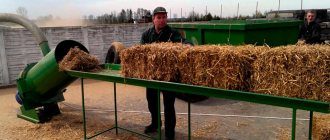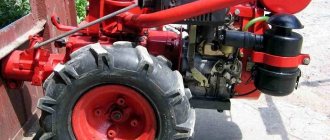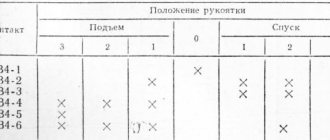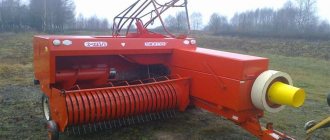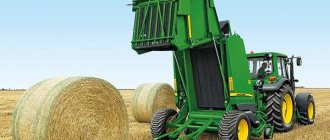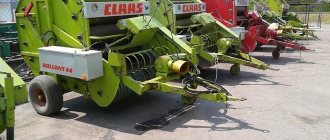How long does a spool of twine last?
We will carry out the calculation using the example of packaging materials, which has been specializing in the production of polypropylene twines for the agricultural sector for many years.
To calculate, we use the formula: N=(M*l/L)/(Y/m).
Here we have N – the required area of land, from which one reel will be enough for us to pack the hay; M – mass of a particular spool of twine in kilograms; l – guaranteed length of 1 kilogram of twine in meters; L – twine consumption per bale or roll of haylage in meters; Y is the yield of a particular agricultural crop in kilograms per hectare; m is the mass of the roll or bale in kilograms.
For example, if we take polypropylene twisted twine Piippo Traditional with a reel of 5 kg, and calculate using the above data, taking into account the packaging in rolls, we get: N = (5*400/45)/(3000/300)=4, 44 hectares. That is, if your field is about 4.5 hectares, then to harvest one crop from it you only need to buy one spool of Piippo Traditional hay baling twine. And if you use bales, then the same reel will only be enough for a small hectare.
We compiled the data into a table.
Twine brand
Packing area
in rolls, ha
Packing area
in bales, ha
Please note that the area in the table is calculated taking into account the above characteristics. They may differ from yours: yield, consumption, haylage weight and others.
How long does one spool of hay twine last?
Every farmer, preparing for harvesting and preparing feed, begins to estimate how many consumables and packaging materials he needs to purchase. After all, if you buy an insufficient amount of hay twine, then there is a risk that the cut green mass will simply disappear without proper packaging. And buying hay tying twine in excess means spending money that could be used for other needs. Experts who know everything about packaging materials told us how to correctly calculate how long the twine will last.
Straw bale dimensions and weight
You are using an outdated browser. This and other sites may not display correctly. You need to update your browser or try using a different one.
Impregnations, paints, oils, waterproofing from FORUMHOUSE
FORUMHOUSE turns 15 this year! During this time, millions of people have built their own homes thanks to the knowledge gained from our website. We want only high-quality and safe materials to be used during construction, which will help preserve houses for many decades. Therefore, we have launched a project of our own FORUMHOUSE brand, under which we will produce building materials and equipment that will serve you for many years and make your life in your own home more comfortable and safer.
We started this project with paints and varnishes for wooden surfaces. Last year, hundreds of forum members have already tested and given positive feedback about our protective and decorative impregnation for wood. Now we have a full range of products for wooden houses (impregnations, paints, oils, varnishes and waterproofing).
In this topic, we will be happy to advise you and select the best solutions for painting your home!
Best regards, FORUMHOUSE team.
Choosing the best job
Today we are summing up the results of the #stayathome competition. In our article we talk about your best work during the period of “high alert”. At the end of the article you will be able to vote for your favorite work. Support the efforts of forum members!
Dear participants, you can attract support in any social networks, this is not prohibited, but it is better to add the tag #forumhouse so that we can see these posts and not doubt your honesty.
How to measure hay in Skirda?
The amount of hay can be calculated using the formula: O=D*[{(P+W)/4}*{(P+W)/4}] where: D is the length of the stack, determined at a height of 1 m from the base W is the width of the stack , the average width is calculated (we measure the stack
at a height of 0.5 m from the base, add the two values and divide by 2, we get the average width of the stack) P - ...
Interesting materials:
How long can iPhone 10 stay in water? How much is iPhone 12? How long can an iPhone stay in water? How many iPhones will be released in 2022? How many amps is the iPhone XS Max? How many amps is the battery for iPhone 6s? How many amps is the battery on iPhone 6s? How many amps to charge an iPhone? How many amps does iPhone XR have? How many amps does it take to charge an iPhone 10?
How much does a haystack weigh?
The hay is piled up after drying at the harvesting site to a moisture content of 25-40%. In the stacks the hay is finally dried. Then the haystacks are stacked in stacks, stacks, or transported under sheds or sheds. The weight of the piles is 0.75−4 centners and depends on the size of the harvest and terrain conditions.
Interesting materials:
How to soften raw rubber? How to propagate laurel at home? How to quickly defrost red caviar? How to defrost red fish? How to defrost pollock fish? How to defrost frozen salmon? How to terminate an agreement with Rocketbank? How to allow access to the webcam in Opera? How to dilute gasoline with oil for a Shtil 180 chainsaw? How to dilute Epin for violets?
Technical specifications for straw blocks
These technical specifications apply to compressed straw bales (hereinafter referred to as bales), made from pressed rye straw and other cereal crops, with additives that increase their biostability and safety from damage by rodents. Lime and borax are used as additives.
Bales are heat-insulating materials and are intended for the construction of external effective self-supporting enclosing structures during construction
low-rise residential buildings of frame type up to two floors inclusive. Bales are used for the construction of buildings of the V degree of fire resistance according to SNiP 01/21/97 in accordance with the requirements of fire safety standards and regulations.
The symbol for bales must consist of letters indicating the abbreviated name of the product, numbers indicating the overall dimensions of the bales, separated by dots: designation of these technical conditions.
An example of a symbol for compressed straw bales with a length of 10 00 mm, a width of 500 mm and a height of 360 mm: (TSP 10 00x500x360 TU 5768-001-85608424-2008).
Compressed straw bales must comply with the requirements of these technical specifications and be manufactured in accordance with technical documentation approved in the prescribed manner.
1.1. Main parameters and dimensions
1.1.1. Bales must be made in a rectangular shape with dimensions mm:
length... from 500 to 1000
The length of the bales must be multiples of 1000 mm.
It is allowed to produce bales of other sizes by agreement with the consumer.
1.1.2. The values of actual deviations of geometric parameters from the specified ones should not exceed + 25 mm for length, + 15 mm for width and height.
1.1.3. In terms of physical and mechanical parameters, bales must meet the requirements specified in Table 1.
| Indicator name | Meaning |
| Average density, kg/m3 | 80 — 15 0 |
| Thermal conductivity in dry condition at a temperature of 5) C. W/(m C), no more | 0,050 — 0,065 |
| Release humidity, %, no more | 10 |
| Sorption humidity, %, no more | 18 |
| Vapor permeability, Mt/(m.h. Pa), not less | 0,20 |
1.1.4. The specific effective activity of natural radionuclides in bales should be no more than 370 Bq/kg.
1.1.5. The bales belong to the group of flammable materials G4 (according to GOST 30244), have a smoke generation coefficient of 393.91 m2 / kg and, according to GOST 12.1.044, belong to the group of materials with moderate smoke-generating ability D2.
1.2. Requirements for raw materials and supplies.
1.2.1. Materials used:
- polypropylene twine, TU 17-05-009-80;
-building lime, GOST 1979;
— technical borax GOST 8429.
1.2.2. It is allowed to use wheat straw and other types of grass with additives approved by the Russian Ministry of Health and ensuring the necessary biostability and its safety from damage by rodents.
1.2.3. Straw should be free from mold, rot and foreign matter (organic and inorganic origin).
1.3.1. Bales are placed in piles, which must consist of bales of the same size.
1.3.2. A label is attached to each stack of bales containing:
— name of the manufacturer or its trademark;
-symbol of bales;
— number of bales (pieces, m3):
— date of manufacture and batch number:
- warranty period of storage:
1.3.3. Bales must be marked in Russian. Marking of bales when delivered outside Russia is carried out in Russian and the customer’s language, indicating the inscription “Manufactured in Russia”.
1.4.1. Bales must be placed on pallets in accordance with GOST 9078 in no more than three rows in height, or in other packaging means that comply with the regulatory and technical documentation approved in the prescribed manner.
1.4.2. The bales are attached to the pallet using steel tape in accordance with GOST 3560 or a tape made of another material that ensures reliable fastening to the pallet.
2. SAFETY REQUIREMENTS.
2.1. Compressed straw bales are non-toxic and belong to the group of flammable materials according to GOST 12.1.044 and GOST 30244.
2.2. The safety of the production process for making bales must be ensured in accordance with GOST 12.3.002, GOST 12.1.004 and other current regulatory documents.
2.3. The safety of loading and unloading operations must meet the requirements of GOST 12.3.009.
2.4. Premises intended for storing raw materials, manufacturing and storing straw bales must comply with the fire safety requirements of the norms and regulations of GOST 12.1.004 and be equipped with fire fighting equipment in accordance with GOST 12.4.009.
2.5. When producing and using bales, the requirements of SP 2.2.2.1327-03 must be observed.
2.6. During the production and use of bales, the following harmful substances may be released into the air of the working area, the concentration of which should not exceed the hygienic regulations established by SanPi N 2.2.3.1384-03 and indicated in Table 2.
p./p.
2.7. Workers must be provided with personal protective equipment in accordance with Resolution of the Ministry of Labor of the Russian Federation No. 51 of December 18, 1998.
2.8. Workers must undergo a preventive medical examination in accordance with the order of the Ministry of Health of the Russian Federation dated December 10, 1996. , and the order of the Ministry of Health and Medical Industry of the Russian Federation dated March 14, 1996.
3. ACCEPTANCE RULES.
3.1. Bales are accepted in accordance with the requirements of GOST 26281 and this standard.
3.2. Bales are presented for acceptance in batches. A batch is considered to be the number of bales of the same size produced using the same technological regime within one day.
3.3. The manufacturer must conduct acceptance and periodic tests of bales.
3.4. Each batch of bales must undergo acceptance tests. During acceptance tests, linear dimensions, average density and humidity are subject to control.
3.5. To check the sizes, a sample of 5% is taken from each pair of bales, but not less than three bales of each size. Continuous control is allowed.
3.6. To determine the average density, three bales are selected that meet the requirements of this standard in terms of linear dimensions.
3.7. To determine moisture content, three bales are taken, from which five samples are taken.
3.8. If, when checking the selected samples, it turns out that at least one does not meet the requirements of this standard, then twice the number of samples should be tested. If the results of repeated tests are unsatisfactory, the batch of bales is not subject to acceptance.
3.9. During periodic testing, thermal conductivity, sorption humidity, vapor permeability and specific effective activity of natural radionuclides are subject to control. These tests are carried out when raw materials and technology change, but at least once a year.
3.10. Tests of bales for flammability and smoke-generating ability are carried out when putting them into production, when raw materials or production technology are changed.
3.11. If the results of periodic tests are unsatisfactory for at least one of the indicators, repeat tests are carried out. If unsatisfactory results of repeated tests are obtained, the batch is rejected and the tests for this indicator are transferred to acceptance tests until positive results are obtained on at least three batches.
3.12. Each batch of bales must be accompanied by a quality document containing:
— name of the manufacturer or its trademark;
— symbol of the product;
— batch number and date of manufacture;
— number of bales in the batch (pcs.);
- warranty period of storage;
4. CONTROL METHODS.
4.1. General requirements for control methods are in accordance with GOST 17177.
4.2. Determination of the length, width, thickness and difference in the lengths of the diagonals of bales is carried out according to GOST 17177.
4.3. The average density is determined according to GOST 17177 on 3 (three) products (bales), in which deviations from the correct shape do not exceed the limit values established in this standard.
4.4. The determination of humidity and sorption moisture is carried out according to GOST 17177 by testing samples taken from the thickness of the bales: in the middle and at a distance of (50 + 5) mm from each edge. Moisture content is calculated as the arithmetic mean of the test results of nine samples taken from three selected bales.
4.5. Thermal conductivity is determined on 5 (five) samples in accordance with GOST 7076.
4.6. Vapor permeability is determined according to GOST 25898.
4.7. The specific effective activity of natural radionuclides is determined in accordance with the Guidelines agreed with the Ministry of Health of Russia and registered with Gosstandart.
4.8. Tests for flammability and smoke-forming ability are carried out in accordance with GOST 30244 and GOST 12.1.044.
5. TRANSPORTATION AND STORAGE.
5.1. Bales are transported by all types of transport in accordance with the Rules for the carriage of goods in force for this type of transport.
5.2. Bales must be stored in warehouses, stacked in stacks no more than 2.0 m high.
5.3. During storage and transportation, bales must be protected from moisture and mechanical damage.
6. INSTRUCTIONS FOR USE.
6.1. Pressed straw bales are used for the construction of low-rise residential buildings in accordance with the requirements of SNiP 2.01.02, SNiP 01.21.97 and other current regulatory documents.
6.2. When installing and operating walls made of bales, they must be protected from moisture.
6.3. The walls must be carefully plastered and tiled.
6.4. When placed in walls, compressed straw bales should have a moisture content of no more than 10%.
6.5. When carrying out construction and installation work, fire safety must be ensured in accordance with PPB-01-03 and other fire safety rules.
7. MANUFACTURER WARRANTY.
7.1. The manufacturer guarantees that the bales comply with the requirements of this standard provided that the consumer complies with the conditions of transportation and storage.
7.2. The guaranteed shelf life of bales in dry rooms is 1 (one) year from the date of manufacture.
7.3. Upon expiration of the warranty period, bales can be used for their intended purpose after a preliminary quality check for compliance with the requirements of this standard.
LIST OF REGULATIVE AND TECHNICAL DOCUMENTS ON
WHICH ARE REFERENCED IN THE TECHNICAL CONDITIONS.
GOST 12.1.004-91 SSBT. Fire safety. General requirements.
GOST 12.1.005-83 SSBT. General sanitary and hygienic requirements for the air in the working area.
GOST 12.1.004-89 SSBT. Fire and explosion hazard of substances and materials. Nomenclature of indicators and methods for their determination.
GOST 12.3.002-75 SSBT. Production processes. General safety requirements.
GOST 12.3.009-76 SSBT. Loading and unloading works. General requirements.
GOST 12.4.009-83 SSBT. Fire fighting equipment for the protection of objects. Main types. Accommodation and service.
GOST 1979-77 Construction lime. Technical conditions.
GOST 3560-73 Steel packaging tape. Technical conditions.
GOST 7076-87 Construction materials. Methods for determining thermal conductivity.
GOST 8429-77 Technical borax.
GOST 9078-84 Flat pallets. General technical conditions.
GOST 17177-94 Heat-insulating construction materials and products. Test methods.
GOST 25898-83 Construction materials and products. Methods for determining vapor permeation resistance.
GOST 26281-84 Heat-insulating construction materials and products. Acceptance rules.
GOST 26598-85 Containers and packaging means in construction.
GOST 30244-94 Construction materials. Flammability test methods
TU 17-05-009-80 Polypropylene twine.
PPB-01-03 Fire safety rules in the Russian Federation.
SNiP 2.01.02-85 Fire safety standards.
SNiP 01.21.97 Fire safety of buildings and structures.
SP 2.2.2.1327-03 Sanitary and epidemiological rules “Hygienic requirements for the organization of technological processes, production equipment and working tools”.
SanPin 2.2.3.1384-03 Sanitary and epidemiological rules and regulations “Hygienic requirements for the organization of construction production and construction work.”
Popular baler models
Balers are divided according to the form of hay pressing: bale and round, as well as by the method of connection to the tractor:
The main technical parameters of hay balers are:
- The hay collection area, depending on the tractor power,
- Productivity in tons per hour, which depends on the volume of the working chamber and the dimensions of the pressing piston,
- Width of captured space,
- Shaft power.
Regardless of the type or model, all balers operate on the same principle.
The hay is picked up from virgin soil and fed into the working chamber by a conveyor, where it is compacted. Next, it enters the compression compartment, in which a bale or roll is formed. The process is completed by tying with twine or whip. The finished bale/roll is taken out of the machine and fed either through a sleeve into a truck or laid out on the ground.


